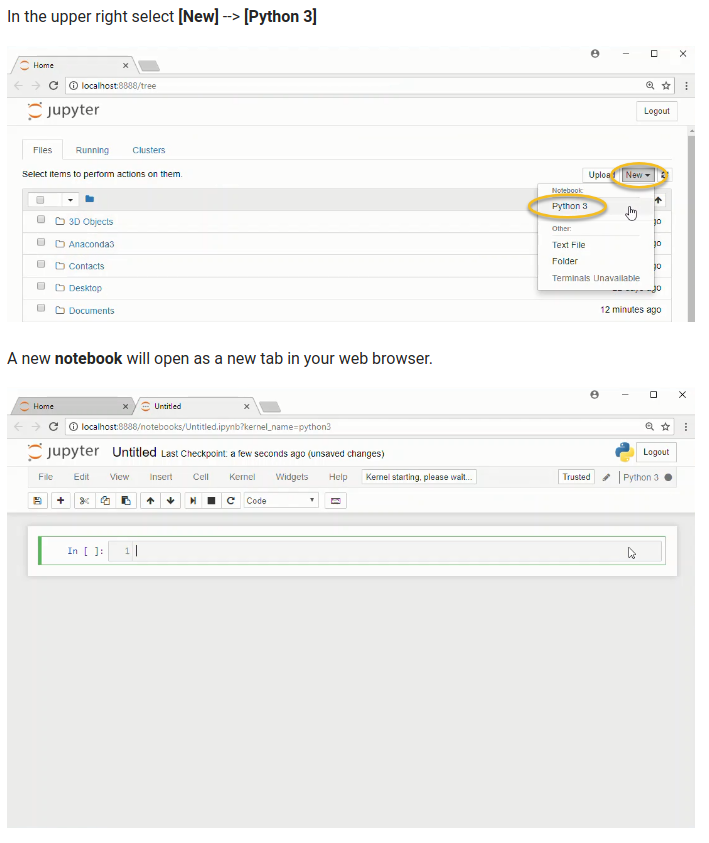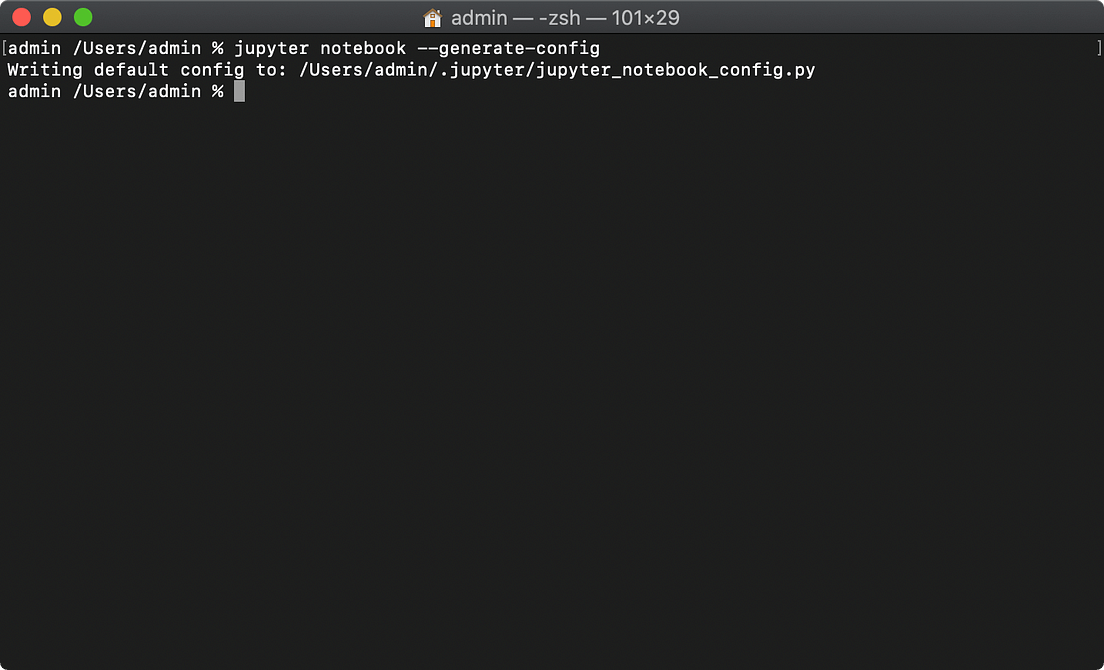

- #MAC INSTALL JUPYTER HOW TO#
- #MAC INSTALL JUPYTER MAC OS X#
- #MAC INSTALL JUPYTER .EXE#
- #MAC INSTALL JUPYTER UPGRADE#
- #MAC INSTALL JUPYTER CODE#
Step 14: Instructions for using Jupyter Notebook next time Note that your prompt changes back (see the pic below) Once you are done, remember to exit your virtualenv using the following command: (ipy-jupyter-venv3) Lipings-MacBook-Pro:test_jupyter Liping$ deactivate Find the location of R.exe on your computer.

Start command: input Jupiter notebook directly in the terminal. Installation six:sudo pip install ignore-installed six. Install Python- dateutil:sudo pip install python-dateutil2.2.

In the prompt type conda install -c anaconda jupyterclient. Install setup tools: sudo PIP install setup tools 33.1.1.

To stop the Jupyter Notebook process, press CTRL+C, Search for the Anaconda Prompt in your computer, right click, and run As Adminstrator. You can start the notebook server from the command line (using Terminal on Mac/Linux, Command Prompt on Windows) by running: This will print some information about the notebook server in your terminal, including the URL of the web. Then insert one cell by the menu shown below (insert Cell Below).Īnd then hit Ctrl + Enter. After you have installed the Jupyter Notebook on your computer, you are ready to run the notebook server. If you are looking for installation documentation for the notebook and/or qtconsole, those are now part of Jupyter. Hit Ctrl + Enter, you will see it the text changed into heading style.
We can now write notes using Markdown, for example, type the following into the cell after changing it to markdown: # Testing Hence, with anaconda or Miniconda installed, press CMD+For example, change the first cell to accept Markdown by clicking Cell > Cell Type > Markdown from the top navigation bar, or by click the Markdown shown in the pic below.
#MAC INSTALL JUPYTER CODE#
We can now run Python code in the cell or change the cell to markdown (markdown is for note, not for code). If you see older version ( ipy-jupyter-venv3 from the top right pull-down menu (Note: this is the so called kernel we installed in Step 8 above): Kemudian akan tampil jendela sebagai berikut.
#MAC INSTALL JUPYTER UPGRADE#
Type python3 in your terminal, if you see similar warning as the pic shown below, it means you will need to install Python 3 (see the steps below for installation). Jika kamu ingin mengupgrade pip ke versi terbaru gunakan python m pip install upgrade pip Kemudian install Jupyter menggunakan python m pip install jupyter Untuk menjalankan Jupyter Notebook, ketikkan perintah jupyter notebook pada Command Prompt dan tekan Enter.
#MAC INSTALL JUPYTER MAC OS X#
Step 1 - Install pyenv Mac Os X come with Pythong 2.7 pre-installed but many Machine Learning packages are progressing to Python 3.x.
#MAC INSTALL JUPYTER HOW TO#
Step 0 - Install Homebrew Read this tutorial on how to install Homebrew on OS X. Type exit() to exit from the Python 2.7 environment Heres how to install Jupyter with python and R integration on OSX using Homebrew. Type in python, if you see similar thing as the pic shown below, it means python 2.7 was installed on your Mac Open a terminal (in your launchpad, type in terminal, and then click and open it.) Once the installation is finished click on the.
#MAC INSTALL JUPYTER .EXE#
exe file and it starts the setup for installation. Install python opencv for jupyter in mac. To test whether your Mac has Python 2.x or 3.x, look at the instructions below. The first page that opens in setup is the Install Python page where it will ask you to install python, customize your installation, install launchers for all users, and add Python to the path. Step 1: Check whether Python is installed on your Mac See below for example.įollow the steps below for detailed instructions. Open a terminal on your mac and type in Python and Python3 to see whether Python and Python3 installed on your mac. Most probably your Mac has already come with Python installed (see step 1 and step 2 below to check whether Python and Python 3 is installed on your mac, because my Mac book air has both Python and Python3.6 installed, I will go ahead to step 3 to install virtualenv). Command line jupyter.This page provides the instructions for how to install and run IPython and Jupyter Notebook in a virtualenv on Mac. Add JupyterLab extension for renderer support: Required: jupyter labextension install jupyterlab.


 0 kommentar(er)
0 kommentar(er)
